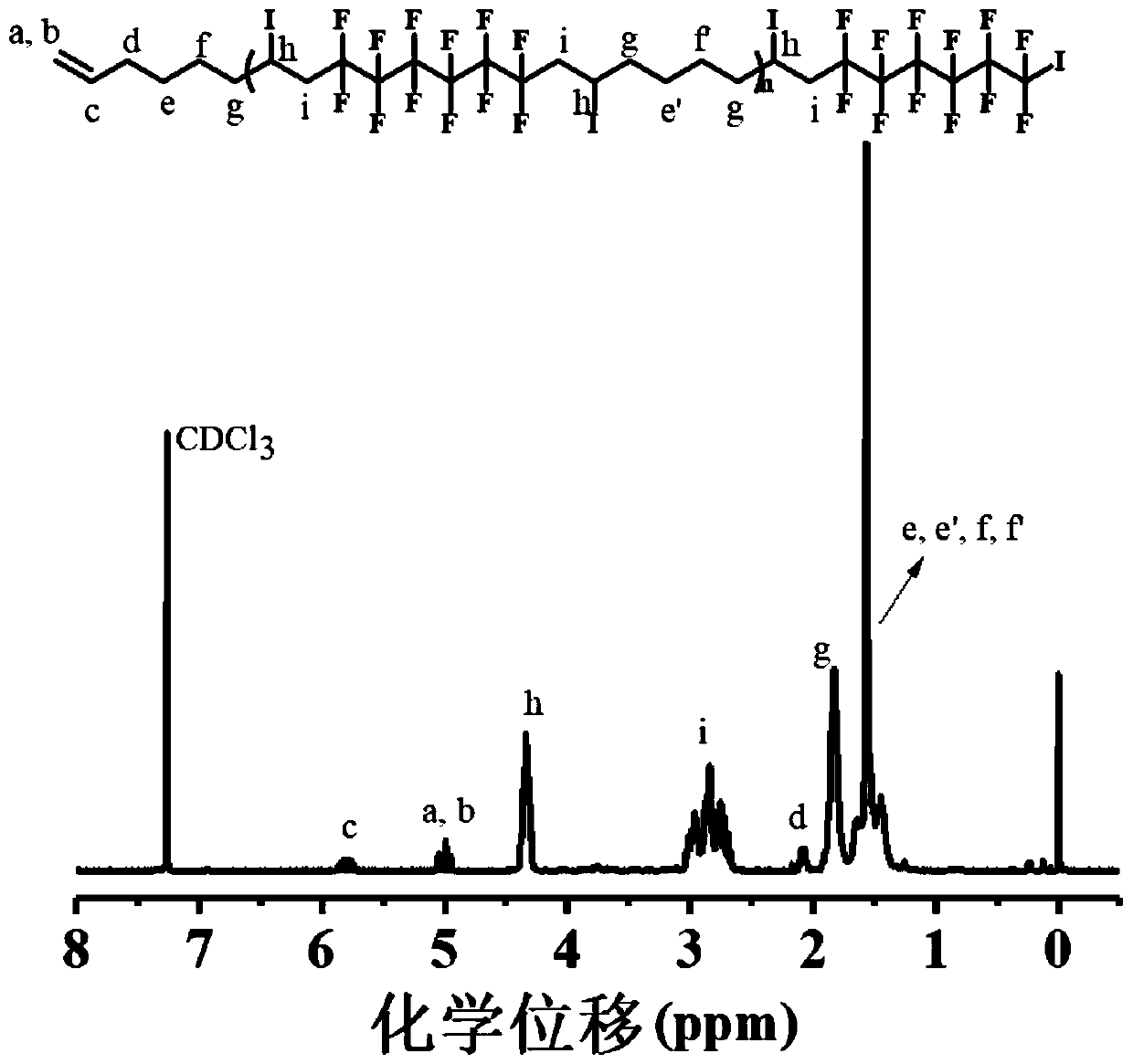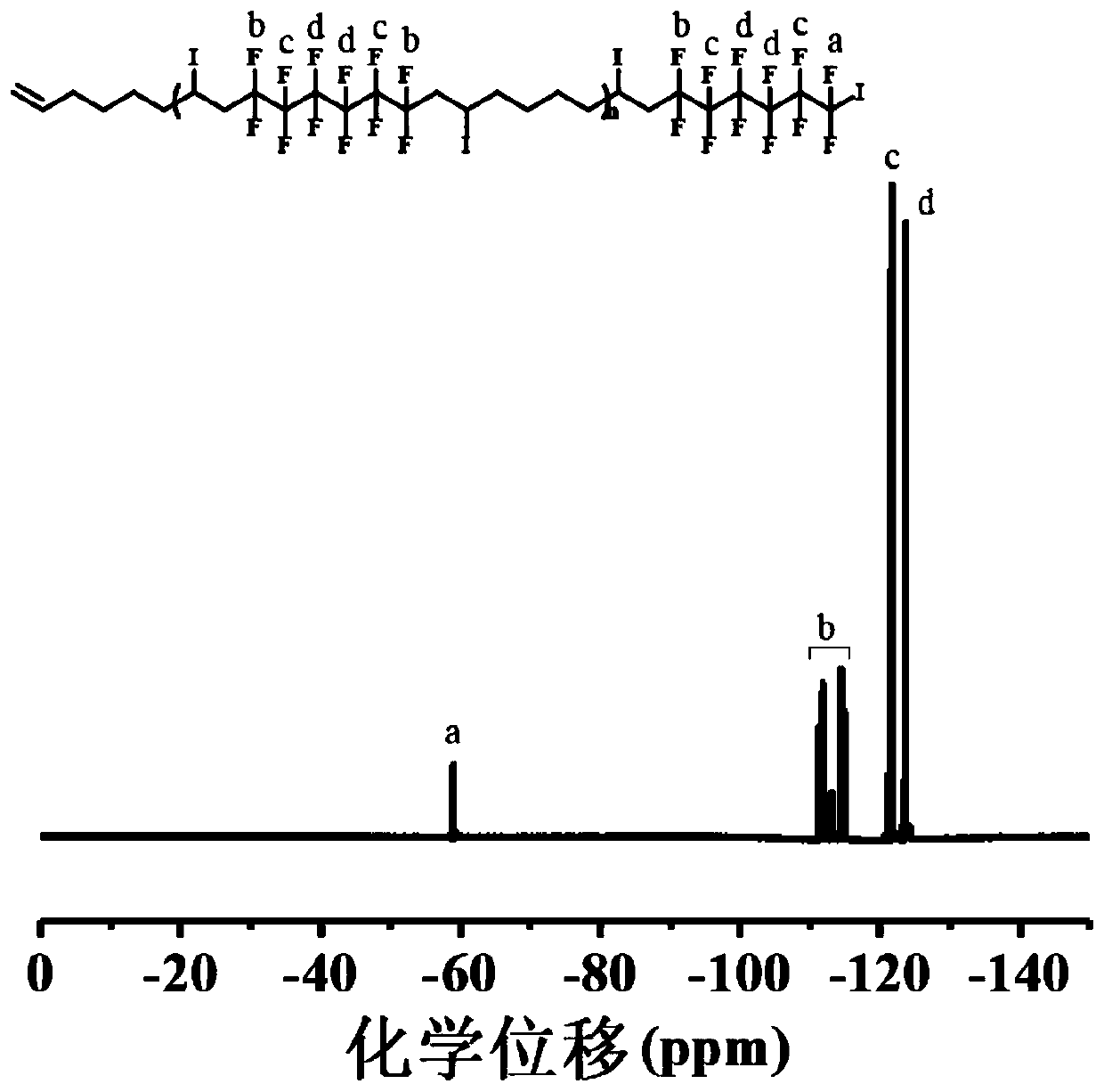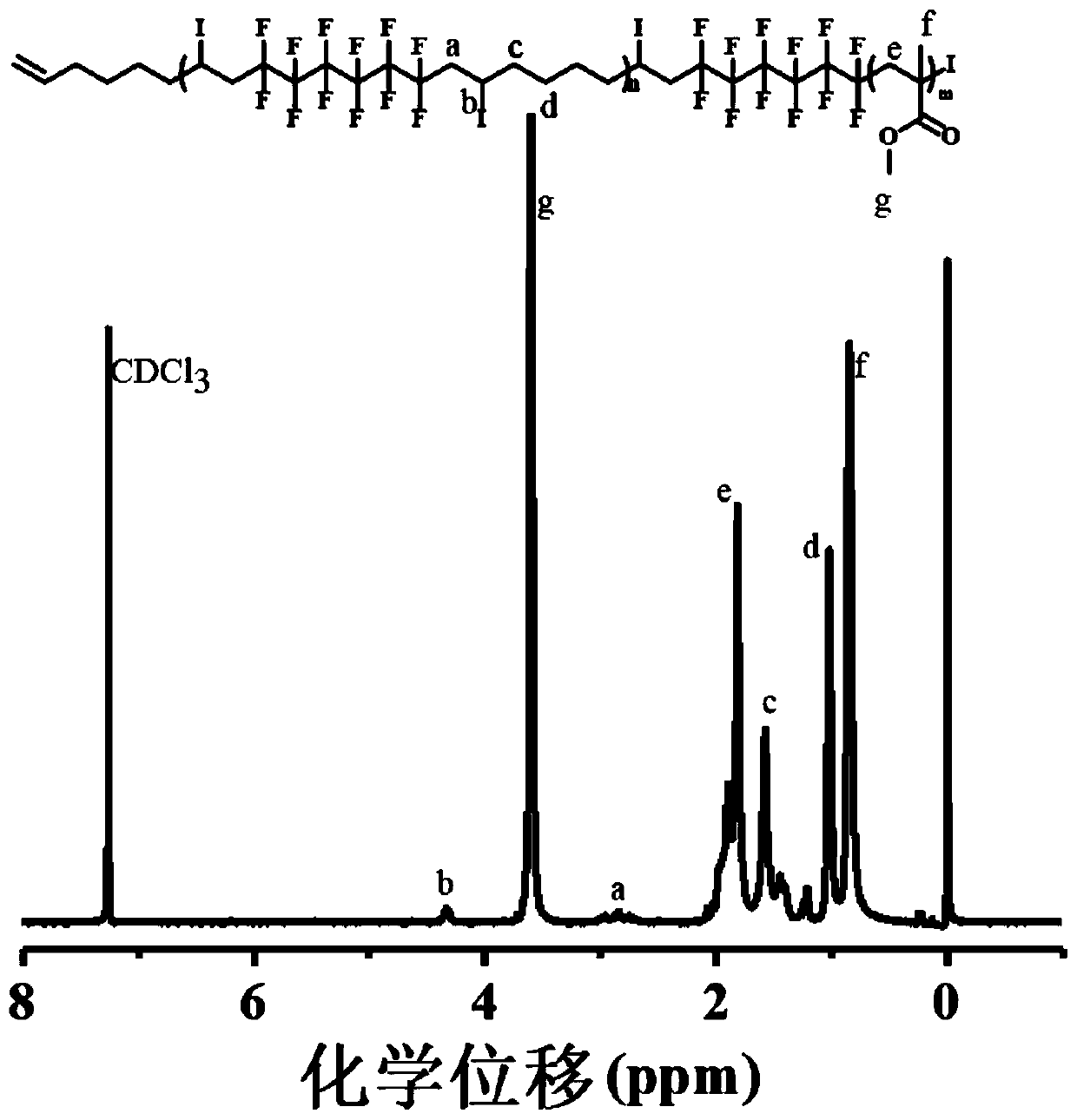Illumination polymerization method of block copolymers of main chain type semi-fluorine alternating copolymers
A technology of alternating copolymers and block copolymers, which is applied in the field of photopolymerization of block copolymers, can solve the problems of single variety, single variety of fluorine-containing polymers, and weak structure designability, etc., and achieve simple and safe operation Effect
- Summary
- Abstract
- Description
- Claims
- Application Information
AI Technical Summary
Problems solved by technology
Method used
Image
Examples
Embodiment 1
[0057] Add 5mmol monomer methyl methacrylate to be polymerized, 0.01mmol alternating fluoropolymer macroinitiator (AB 1 ) n , 0.002mmol photocatalyst tris(2,2'-bipyridine) ruthenium dichloride (Ru(bpy) 3 Cl 2 ), 0.01mmol sodium ascorbate (AsAc-Na), 0.5mL acetone, after the deoxygenation operation, choose to carry out the polymerization reaction at room temperature under the irradiation of 485nm LED blue light. After the reaction reached the predetermined time, the reaction tube was opened, and a small amount of polymer solution was extracted to carry out the proton nuclear magnetic resonance spectrum ( 1 H NMR) test and calculate the conversion rate and nuclear magnetic molecular weight (M n,NMR ). The rest of the polymer solution was dissolved in a certain amount of tetrahydrofuran, over neutral Al 2 o 3 After the column, add a precipitating agent to precipitate, stand still, suction filter, and vacuum dry to obtain a block copolymer of "semifluoro" alternating copolyme...
Embodiment 2
[0062] Add different monomers (5mmol) to be polymerized in the photoreaction tube, 0.025mmol alternating fluoropolymer macromolecular initiator (AB1 ) n , 0.005mmol photocatalyst tris(2,2'-bipyridine) ruthenium dichloride (Ru(bpy) 3 Cl 2 ), 0.025mmol sodium ascorbate (AsAc-Na), 0.5mL acetone, after the deoxygenation operation, choose to carry out the polymerization reaction at room temperature under the irradiation of 485nm LED blue light. Among them, (AB 1 ) n The molecular weight is 4000g / mol, and the PDI is 1.40. After the reaction reached the predetermined time, the reaction tube was opened, and a small amount of polymer solution was extracted to carry out the proton nuclear magnetic resonance spectrum ( 1 H NMR) test and calculate the conversion rate and nuclear magnetic molecular weight (M n,NMR ). The rest of the polymer solution was dissolved in a certain amount of tetrahydrofuran, over neutral Al 2 o 3 After the column, a precipitant was added for precipitatio...
Embodiment 3
[0067] Add 5mmol monomer methyl methacrylate to be polymerized, 0.01mmol different alternating fluoropolymer macroinitiators (AB 1 ) n A. (AB 2 ) n or (AB 3 ) n , 0.002mmol photocatalyst tris(2,2'-bipyridine) ruthenium dichloride (Ru(bpy) 3 Cl 2 ), 0.01mmol sodium ascorbate (AsAc-Na), 0.5mL acetone, after the deoxygenation operation, choose to carry out the polymerization reaction at room temperature under the irradiation of 485nm LED blue light. Among them, (AB 1 ) n A. (AB 2 ) n or (AB 3 ) n The molecular weight and PDI are 6400g / mol, 1.75; 2200g / mol, 1.28; 9800g / mol, 1.91, respectively.
[0068] After the reaction reached the predetermined time, the reaction tube was opened, and a small amount of polymer solution was extracted to carry out the proton nuclear magnetic resonance spectrum ( 1 H NMR) test and calculate the conversion rate and nuclear magnetic molecular weight (M n,NMR ). The rest of the polymer solution was dissolved in a certain amount of tetrah...
PUM
| Property | Measurement | Unit |
|---|---|---|
| degree of polymerization | aaaaa | aaaaa |
| molecular weight distribution | aaaaa | aaaaa |
Abstract
Description
Claims
Application Information
 Login to View More
Login to View More - R&D
- Intellectual Property
- Life Sciences
- Materials
- Tech Scout
- Unparalleled Data Quality
- Higher Quality Content
- 60% Fewer Hallucinations
Browse by: Latest US Patents, China's latest patents, Technical Efficacy Thesaurus, Application Domain, Technology Topic, Popular Technical Reports.
© 2025 PatSnap. All rights reserved.Legal|Privacy policy|Modern Slavery Act Transparency Statement|Sitemap|About US| Contact US: help@patsnap.com



